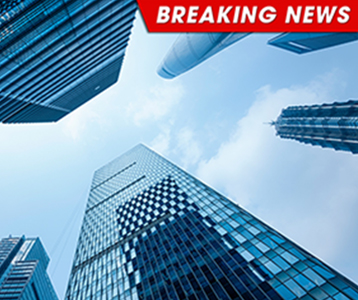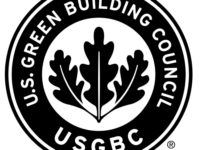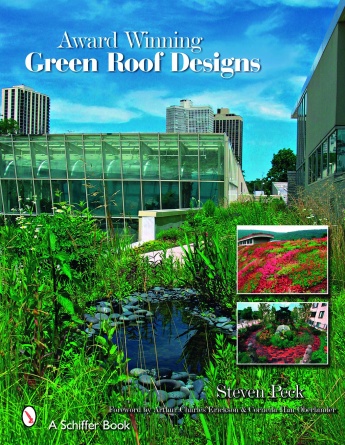USGBC Announces Annual LEED Homes Awards

Last week, the U.S. Green Building Council (USGBC) announced the recipients of the annual LEED Homes Awards, which celebrate residential projects, developers and builders using LEED to improve quality of life for residents, reduce a building’s impact on the environment, and create healthier and more resilient communities. LEED, or Leadership in Energy and Environmental Design, is the world’s most widely used green building rating system. Recipients represent multi-family, single-family, and affordable housing projects and companies that participated in LEED in 2018.
“LEED is known for setting the highest standards for the sustainability and performance of buildings, and it plays an even more important role when it’s applied to our personal spaces – our homes,” said Mahesh Ramanujam, president and CEO, USGBC. “We are seeing more and more homeowners and builders make the important decision to pursue LEED, and USGBC is committed to continue building on the success of the residential market.”
This year’s LEED Homes Award recipients include:
Outstanding Single-Family Project:
Holt Residence, Providence, RI: The LEED Platinum 100-year-old Holt Residence makes a strong statement that no matter the condition, location, or age of a home, it can be healthy, sustainable, and high performing when carefully redesigned. From the absence of harmful volatile organic compounds (VOCs) in building materials to the 1000-gallon cistern rainwater capture system used for landscape irrigation, the details behind this project make for a major sustainability milestone.
Silverman Residence, George Town, Cayman Islands: True to the Caymanian lifestyle, the Silverman Residence was designed to be a place that brings people together and offers beautiful scenery. With a cost-effective envelope, the project team was able to invest more in sustainability features, including rainwater capture. While the island is prone to hurricanes, this home is equipped to store nearly 20,000 gallons of rainwater that can be filtered for human consumption in an emergency situation.
Owen Residence, Little Rock, Ark.: Built by River Rock Builders, the Owen Residence is a dream project for owners Ann and Rick Owen who wanted to build the healthiest and most sustainable home possible. In March 2018, their home achieved LEED Platinum with sustainability features like 42 PV solar panels that provide all the energy needed to power the 2662-square-foot home, as well as two vehicles, greatly reducing their carbon footprint.
Outstanding Multi-Family Project:
Kottinger Gardens Phase 1, Pleasanton, Calif.: Kottinger Gardens was intentionally designed to reflect what was already important to the neighborhood - helping residents feel connected and capable. Built by MidPen Housing, Phase 1 of this project provides senior residents access to community amenities, walking paths, and outdoor spaces all within the price of affordable housing limits. This active and healthy community also includes sustainability features like PV solar panels, high-efficiency windows, and Energy Star appliances to help reduce environmental impact.
The Albany Damien Center, Albany, N.Y.: After a devastating fire that destroyed the original project, the Albany Damien Center was able to rebuild and achieve LEED Gold. The Albany Damien Center supports some of New York’s most vulnerable residents—chronically homeless people and families living with or affected by HIV/AIDS. Some sustainability features include low-flow fixtures to reduce water use, LED lighting to lower energy consumption, and radon-resistant construction techniques.
Ten at Clarendon, Arlington, Va.: Built by CRC Companies LLC, Ten at Clarendon achieved LEED Platinum for sustainability features that also serve as amenities for tenants. These include a rooftop garden where tenants can harvest produce which encourages time outside and organic food consumption as well as bike storage and a bike repair shop which encourage alternative transportation thus lowering emission rates.
Outstanding Affordable Project:
El Camino Real Apartments, Hatch, N.M.: To prove that housing can be affordable and address climate risks, El Camino Real Apartments looked to LEED. Built by Cresline Buildings and Thomas Development, these apartments sit on a floodplain and were designed for resiliency. The final design included a primary retention pond to capture storm water runoff, numerous small detention ponds connected around the site, permeable landscape zones, and a finish-floor height above the historic 100-year flood level.
CAMBA Gardens Phase II, Brooklyn, N.Y.: By repurposing underutilized hospital property, CAMBA Gardens Phase II provides housing and comprehensive health care services for low-income individuals and families. Built by CAMBA Housing Ventures, Inc., this project employs energy efficient features like Energy Star appliances, low-flow plumbing features, and high-efficacy lighting—all of which contribute to 22 percent savings over the ASHRAE 90.1-2007 baseline.
Casa Feliz, Albuquerque, N.M.: Casa Feliz is an 89-unit, affordable, urban infill project, spread over 12 sites in the International District of Albuquerque. Built by the Greater Albuquerque Housing Partnership, the project is reserved for families and individuals with incomes at 30 to 60 percent of the area median household income. Some of the sustainability features include Energy Star appliances and 100 percent permeable landscaping surface to allow for efficient irrigation and water use reduction.
Outstanding Developer:
Marshall Gobuty, Bradenton, Fla.: In 2018, Pearl Homes President Marshall Gobuty certified his 100th LEED Platinum home at Mirabella, one of the nation’s most sustainable 55+ communities. Gobuty focuses on providing tenants with lower energy and water bills, improved thermal comfort, and reduced humidity.
First Community, San Jose, Calif.: First Community Housing has demonstrated a long-term commitment to developing projects that incorporate increasingly healthy, sustainable features. Achieving LEED Gold for the first time for a project in 2007, the standard for all First Community Housing projects is now LEED Platinum.
Brightview Senior Living, Baltimore, Md.: With its proactive, holistic approach to sustainability and well-being, Brightview Senior Living invests in its commitment to be a great place to live and work. Each Brightview Senior Living community focuses on the wellness of its residents through community oriented design and LEED features like water and energy modeling, commissioning, and measurement and verification, all designed to increase efficiency and cut costs.
Project of the Year
For the first time, the USGBC community has the opportunity to vote for the LEED Homes Project of the Year through an online poll, that closed on June 28, 2019.
2018 LEED Homes Power Builders include:
USGBC also recognizes “LEED Homes Power Builders,” an elite group of developers and builders who have exhibited an outstanding commitment to LEED and the residential green building movement. This year’s LEED Homes Power Builders are developers and builders that have LEED-certified 75 percent of their homes/unit count built in 2018. Homes at any LEED certification level are eligible for consideration.
- AMLI
- Brookfield Properties
- CAMBA Housing Ventures, Inc.
- The Dinerstein Companies
- Frankel Building Group
- Gerding Edlen
- Housing Visions
- Ithaca Neighborhood Housing
- JHM Group
- Koral Gobuty Development
- Maracay Homes
- MHI Austin
- MHI Dallas
- National Community Renaissance
- Native American Connections
- Fair & Square Builders
- Thomas Development
- Thrive Home Builders
Through LEED, USGBC is working to transform the residential housing market to better serve people and communities. There are more than 480,000 LEED-certified residential units globally and another 1.1 million currently in the pipeline. Of these units, 30 percent qualify as affordable housing in their markets. LEED is the world’s most widely used rating system for green buildings. In April 2019, the organization introduced the latest version of the green building rating system, LEED v4.1. LEED v4.1 prioritizes credits that have a higher value to home owners and residents, such as improved comfort, energy and water savings, and healthy materials. To learn more about LEED for Homes, visit usgbc.org/homes.
Looking for a reprint of this article?
From high-res PDFs to custom plaques, order your copy today!








